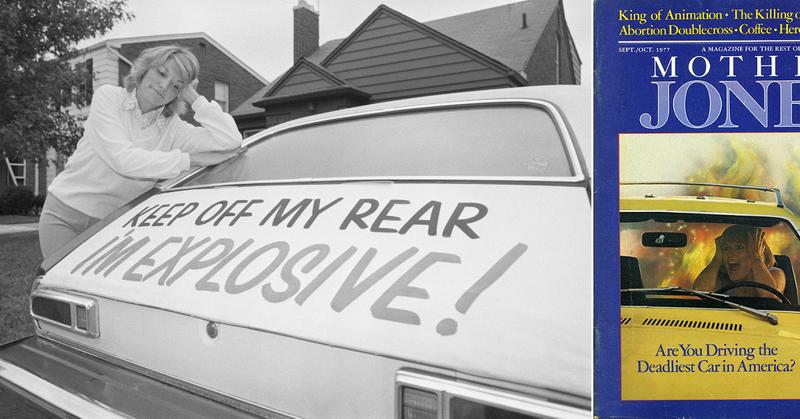Ford Pinto: The Explosive Story Of An Ugly '70s Subcompact Car
By | November 29, 2016

How do you remember the Ford Pinto -- as a firetrap or simply a popular, ubiquitous, fairly ugly car? The story of this affordable subcompact car, produced from 1971 to 1980, is an important on in the history of automobile safety, but also contains lessons in journalism and business ethics. Some analysis done in the years since the Pinto incident indicates that this car took the fall for the whole industry and that overblown hysteria played a part in its demise.
Robert Eidschun was the mastermind behind the classic Ford Pinto. This groovy design captured the attention of everyone in the 70s. It was in production from 71 till the end of the decade and over 3 million were produced. Everyone fell in love with its clean lines and slick hatchback, but underneath this smokin exterior there was a much more sinister and hotter truth.
Invasion Of The Subcompacts

The Pinto, like other cars in the "subcompact" category, became very popular during a short period of time because the country was struggling through a famous gas crisis, and smaller, more efficient cars were more appealing to consumers than the gas guzzling luxury sedans and muscle cars Detroit had been making for years.
It was discovered in 1973 that the Pinto’s fuel system had a major problem, it could suddenly burst into flames if the fuel tank was punctured in low speed collisions. In many of these cases the victims could find themselves trapped in this death machine, burning up with the car. This flaw led to the recall of over 1.5 million vehicles, and numerous lawsuits filed against Ford. This recall was no laughing matter, it still sits as one of the biggest recalls in history.
When Cost-Benefit Analysis Goes Wrong

At the heart of the Pinto saga was a 1973 cost-benefit analysis paper called “Fatalities Associated with Crash Induced Fuel Leakage and Fires” submitted to the National Highway Traffic Safety Administration (NHTSA). In this report, known as the "Pinto memo," it was revealed that the Environmental and Safety Engineering division at Ford came to the conclusion that it was cheaper to not spend the $11 to reduce the fire risk on all the cars, and instead pay for the injuries the car caused on a case by case basis.
In any business decision, the cost and benefit must be weighed -- unfortunately, when it comes to automobile safety, the "benefit" can mean human survival. Ford had decided it was cheaper to do nothing about the fuel tank problem. Paying medical bills and bereavement settlements to victims' families would be less expensive than recalling all Pintos on the road for this minor improvement.
Pinto Madness

Seeing an injustice, Mother Jones magazine brought this issue to light in the cover story “Pinto Madness.” Though the public and writer may have had good intentions, the piece leaned heavily on the emotional impact of this problem and more-than doubled the estimate of injuries or deaths due to the Pinto's flaws. Mother Jones said there would be anywhere from 500-900 deaths, while the actual figure estimated 180 burn related deaths and 180 injuries. The Mother Jones article labeled the Pinto a "firetrap" and concluded that Ford was “callously trading lives for profits.”
In some cases, a company must take action even if the cost-benefit analysis says otherwise -- in the court of public opinion, Ford looked like a company that would let a few of its customers burn to death rather than spend money to keep them safer.
The Pinto Was No Worse Than The Competition

One of the biggest things that seems to be forgotten from this controversy is that other cars from different manufacturers were made just as poorly. A study that was completed after this “Pinto Madness” concluded that the fire risk of the Pinto was no greater than the other car models of the time. The Ford Pinto seemed to serve as the scapegoat. Another study on the fatality rates of the Pinto as well as other cars of the 70s showed that fires, and rear-end fires in particular, were a small portion of overall fatalities. It was found that only 1% of automobile collisions would result in fire, and even if a fire was started, only 4% were fatal, meaning 1 in every 2500 collision was the problem on everyone's mind.
Automobile Safety Was Improved, In The End

While they may have fought a bit dirty and unethically, the public outcry caused by Mother Jones did eventually lead to positive change. The poor safety inspection of the Pinto led the NHTSA forcing Ford to do that historic recall and ensure future models were properly tested. Thankfully this example that was made of Ford now ensures much higher safety standards in all vehicles produced today.
